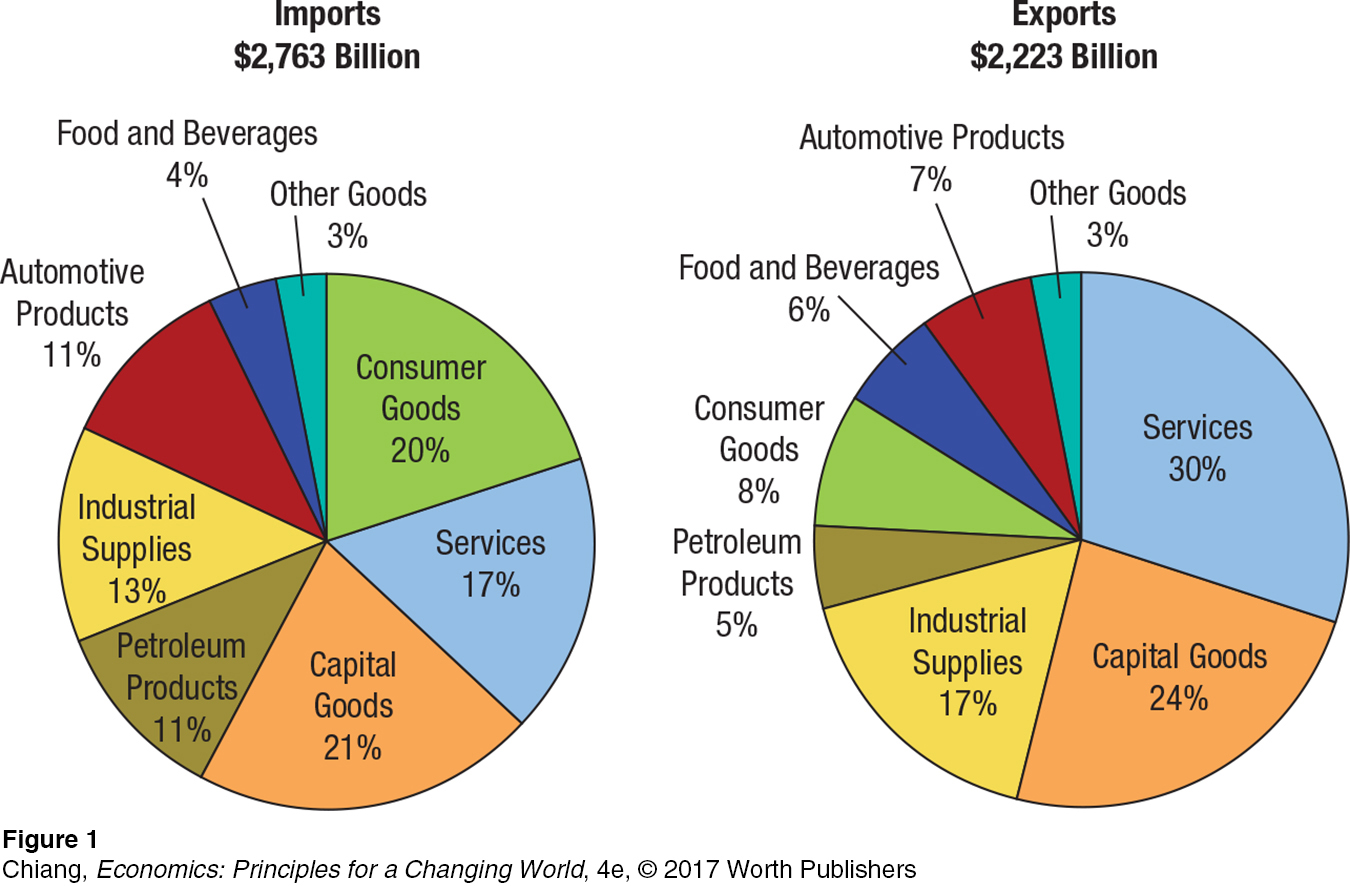
Understanding why trade with other countries is essential for consumers and producers
Simon Dawson/Bloomberg via Getty Images
Learning Objectives
16.1 Distinguish between absolute and comparative advantage.
16.2 Describe the benefits of free trade.
16.3 Describe the terms of trade.
16.4 Describe the economic impacts of trade on consumers and producers.
16.5 Describe how trade is restricted by tariffs and quotas.
16.6 Discuss the various arguments against free trade.
16.7 Compare the different viewpoints of how trade is believed to affect the environment.
16.8 Analyze the debate on whether foreign workers benefit from trade or are exploited as a result of trade.
Every day at the Port of Los Angeles, up to ten mega container ships arrive, each containing 10,000 to 19,000 TEU (20-foot equivalent units, or 20 feet X 8 feet X 8.5 feet standard containers) of goods from around the world. A standard tractor trailer can transport two TEUs, which means that up to 80,000 tractor trailers full of goods are brought into the United States each day, at just one port.
These cargo ships and trucks transport the goods we enjoy every day that are made in China, France, Brazil, Kenya, Australia, and the 180 other countries with which the United States has trading relations.
Take a quick look in your closet, and count how many countries contributed to your wardrobe—shirts tailored in Hong Kong, shoes made in Italy, sweaters made in Norway, jackets made in China, and the list goes on. On occasion, you might come across something made in the United States, although it is a rarity in the apparel industry. Most Americans wear foreign-made clothing, over half drive foreign cars, and even American cars contain many foreign components. Australian wines, Swiss watches, Chilean sea bass, and Brazilian coffee have become common in the United States. We also buy services from other countries, for example, when we travel to Europe and stay in hotels and use its high-speed trains. The opportunity to buy goods and services from other countries gives consumers more variety to choose from, and also provides an opportunity to buy products at lower prices.
Although the United States buys many goods from other countries, it also sells many goods to other countries—just not clothing. The “Made in USA” label is highly respected throughout the world, and the United States sells commercial airplanes, cars and trucks, tractors, high-tech machinery, and pharmaceuticals to individual consumers and businesses in other countries. It also sells agricultural goods and raw materials, such as soybeans, copper, and wood pulp. And it sells services, too, such as medical care, tourist services when foreigners visit the United States, higher education (foreign students studying at American colleges), and entertainment, including movies, software, and music.
Trade is now part of the global landscape. Worldwide foreign trade has quadrupled over the past 25 years. In the United States today, the combined value of exports and imports exceeds $5 trillion a year. Twenty-five years ago, trade represented about 20% of gross domestic product (GDP); today, it accounts for over 30% of GDP. Nearly a tenth of American workers owe their jobs to foreign consumers. Figure 1 shows the current composition of U.S. exports and imports. Note that the United States imports and exports a lot of capital goods—that is, the equipment and machinery used to produce other goods. Also, we export about 50% more services than we import, services such as education and health care. Third, exports of petroleum products are catching up to imports as the United States relies less on imports of oil as domestic oil production increases.
Figure 16.1: FIGURE 1 U.S. TRADE BY SECTOR (2015)

Figure 16.1: This figure shows trade by sector. The United States imports and exports large amounts of capital goods, the equipment and machinery used to produce other goods. Also, nearly one-third of U.S. exports are services such as education and health care.
Does all of this world trade make consumers and producers better off? This chapter examines the effects of trade on both the importing (buying) and exporting (selling) countries, and how trade affects the prices and availability of goods and services in each country.
Improved communication and transportation technologies have worked together to promote global economic integration. In addition, most governments around the world have reduced their trade barriers in recent years.
Trade must yield significant benefits or it would not exist. After all, there are no laws requiring countries to trade, just agreements permitting trade and reducing impediments to it. This chapter begins with a discussion of why trade is beneficial. We look at the terms of trade between countries. We then look at the tariffs and quotas sometimes used to restrict trade, calculating their costs. Finally, we will consider some arguments critics have advanced against increased trade and globalization.

International trade allows consumers to buy goods (such as televisions) produced in many countries. Competition from trade allows for greater variety and lower prices.
Yuri Arcurs/age fotostock


